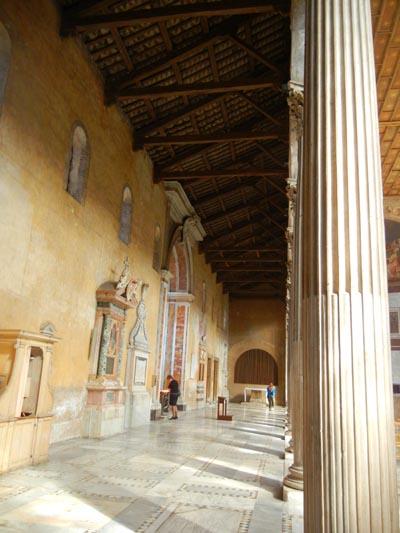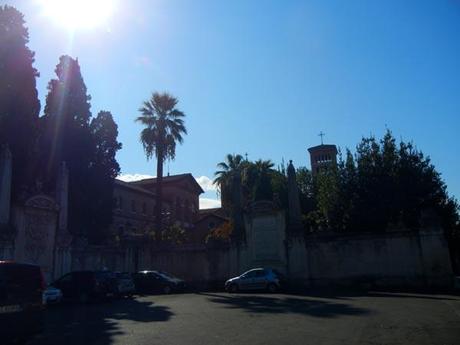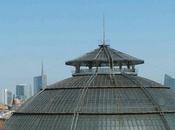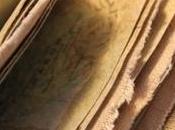 S.Anselmo, S. Alessio e S.Sabina….il Giradino delle Rose…anche questa seconda parte non vi deluderà….seguiteci!
S.Anselmo, S. Alessio e S.Sabina….il Giradino delle Rose…anche questa seconda parte non vi deluderà….seguiteci!
St. Anselm, S. Alessio and St. Sabina …. Rose garden … even this second part will not disappoint you…. follow us!
Nella prima parte vi avevamo lasciati con il Giardino degli Aranci…e quindi diventa logico proseguire con la basilica di Santa Sabina…una vera meraviglia!
In the first part, we have left you with the Orange Garden … and now it’s logical to continue with the church of Santa Sabina … a true wonder!

Santa Sabina

Santa Sabina
Costruita nel V sec. è oggi una delle chiese paleocristiane meglio conservate e sede della curia generalizia dell’Ordine dei Frati Predicatori (Domenicani).
La chiesa sorge sulle rovine della casa della matrona romana Sabina, divenuta poi santa. Fu costruita tra il 422 e il 432 da Pietro di Illiria.
Secondo quanto riportanto in alcune iscrizioni, accanto alla chiesa sorgeva il tempio di Giunone Regina. Le sue colonne, 24, furono incorporate e utilizzate nell’edificazione della chiesa.
Built in the V century is one of the best preserved early Christian churches and headquarters of the General Curia of the Order of Friars Preachers (Dominicans).
The church stands on the ruins of the house of the Roman matron Sabina, who later became a saint. It was built between 422 and 432 by Peter of Illyria.
According to some inscriptions, next to the church stood the temple of Juno Regina. Its 24 columns were used to built the church.

 Nell’ IX sec. la chiesa divenne parte dei bastioni imperiali e inevitabilmente subì pesanti rimaneggiamenti. Molti dei quali ad opera di Domenico Fontana e Francesco Borromini.
Nell’ IX sec. la chiesa divenne parte dei bastioni imperiali e inevitabilmente subì pesanti rimaneggiamenti. Molti dei quali ad opera di Domenico Fontana e Francesco Borromini.


Trasformata successivamente in un lazzaretto, venne riportata alla sua originaria struttura con i restauri di Antonio Munoz.
Nel 1912 il papa affido la cura della chiesa a Domenico di Guzman e al suo ordine di frati domenicani che ancora oggi ne fanno la loro base.
Santa Sabina è inoltre la prima stazione quaresimale.
In the IX century the church became part of the imperial ramparts and inevitably has underwent extensive alterations carried out by Domenico Fontana and Francesco Borromini.
Then transformed into a hospital, was restored to its original structure by Antonio Munoz.
In 1912 the pope entrusted the care of the church to Dominic and his order of Dominican friars who still make their home base there.
Santa Sabina is also the first station of Lent.
 La struttura interna è quella tipica delle basiliche, con 3 navate divise da colonne e da un grande abside semi-circolare.
La struttura interna è quella tipica delle basiliche, con 3 navate divise da colonne e da un grande abside semi-circolare.

Il soffitto è a cassettoni, un tempo ricoperto da mosaici, oggi visibili solo in prossimità delle arcate.
The internal structure has 3 naves divided by columns and a large semi-circular apse.
The ceiling is coffered, once covered with mosaics, still visible only near the arches.
 Sulla controfacciata della chiesa ce ne è uno che riporta, in esametri latini, la dedica della chiesa.
Sulla controfacciata della chiesa ce ne è uno che riporta, in esametri latini, la dedica della chiesa.

On the counter of the church there is one that shows, in Latin hexameters, the inscription of the church.
 Sempre parlando di mosaico, fate caso alla tomba che si trova sul pavimento della chiesa…è quella di fra’ Munoz di Zamorra.
Sempre parlando di mosaico, fate caso alla tomba che si trova sul pavimento della chiesa…è quella di fra’ Munoz di Zamorra.

Still speaking of the mosaic, notice the tomb located on the floor of the church … is that of Zamorra of Munoz.
 L’ingresso principale conserva una porta lignea del V sec., uno dei più antichi esempi di scultura lignea paleocristiana.
L’ingresso principale conserva una porta lignea del V sec., uno dei più antichi esempi di scultura lignea paleocristiana.

The main entrance is by a wooden door of the V century, one of the oldest examples of early Christian carving.
 Lasciata Santa Sabina, proseguiamo dritte, verso Piazza dei Cavalieri di Malta dove si trova il Priorato. Dovete assoultamente spiare dal buco della serratuta…incredibilmente vedrete la cupola di San Pietro…uno spettacolo fantastico.
Lasciata Santa Sabina, proseguiamo dritte, verso Piazza dei Cavalieri di Malta dove si trova il Priorato. Dovete assoultamente spiare dal buco della serratuta…incredibilmente vedrete la cupola di San Pietro…uno spettacolo fantastico.

Leaving Santa Sabina, we have continued straight to Piazza dei Cavalieri di Malta where there is the Priory. Absolutely you need to spy on the hole.. incredibly you will see the dome of St. Peter’s … a fantastic show.

Priorato dei Cavalieri di Malta....

...è da qui che dovete spiare dal buco della serratura
 Dalla piazza imboccate via di Sant’Alessio e raggiungete la Basilica di Sant’Alessio all’Aventino (orario di apertura 9.00-12.00/15.30-18.30)
Dalla piazza imboccate via di Sant’Alessio e raggiungete la Basilica di Sant’Alessio all’Aventino (orario di apertura 9.00-12.00/15.30-18.30)

From the square take Via Sant’Alessio and get to the Basilica of St. Alexis on the Aventine (opening 9.00-12.00/15.30-18.30)


Sant'Alessio


 Costruita su ordine di papa Onorio III tra il III e il IV sec., la chiesa è dedicata ai santi Bonifacio di Tarsio e Alessio.
Costruita su ordine di papa Onorio III tra il III e il IV sec., la chiesa è dedicata ai santi Bonifacio di Tarsio e Alessio.



Negli anni a seguire venne più volte ricostruita e restaurata.
Oggi, infatti, la chiesa conserva ancora elementi diversi delle epoche passate come il campanile romanico ed il portico medievale.
Built on the orders of Pope Honorius III between the III and IV centuries, the church is dedicated to Saints Boniface of Tarsus and Alessio.
In the following years it was rebuilt and restored several times.
Today, in fact, the church still retains many elements of past ages as bell tower Romanesque and medieval portico.

Sant'Alessio - campanile romanico
Ultima chiesa, da non perdere, è quella di Sant’Anselmo all’Aventino.
Anche questa, poco distante dalle altre, merita una visita, soprattutto per il bellissimo cortile esterno che vi accoglie. Lì abbiamo trovato anche il parcheggio delle bici.
Last church, not to be missed, is that of St. Anselm on the Aventine.
This, not far from the others, is worth a visit, especially for the beautiful outdoor courtyard, where we found also the parking of bicycles.

cortile chiesa Sant'Anselmo

 Nell’atrio, all’ingresso, troverete una statua di bronzo raffigurante Sant’Anselmo di Aosta o di Canterbury.
Nell’atrio, all’ingresso, troverete una statua di bronzo raffigurante Sant’Anselmo di Aosta o di Canterbury.


In the atrium at the entrance you will find a bronze statue of St. Anselm of Aosta or the Archbishop of Canterbury.

statua di Sant'Anselmo
La Chiesa fu costruita, in stile romanico lombardo, negli anni 1893-1900, da Francesco Vespignani, su disegno dell’Abate Ildebrando de Hemptinne.
L’interno è a tre navate, con 12 colonne di granito grigio lucido ed un altare centrale di marmo bianco.
The Church was built in the Lombard Romanesque style, in the years 1893-1900, by Francesco Vespignani, designed by Abbot Hildebrand de Hemptinne.
The interior has three naves, with 12 gray granite columns and a central altar of polished white marble.
 La chiesa e la badia furono fatte costruire per volere e con il consistente contributo di papa Leone XIII su un terreno appartenente ai Cavalieri di Malta.
La chiesa e la badia furono fatte costruire per volere e con il consistente contributo di papa Leone XIII su un terreno appartenente ai Cavalieri di Malta.

Adiacente alla chiesa la Badia Primaziale della Confederazione Benedettina è sede del Pontificio Ateneo Sant’Anselmo e del Pontificio Istituto Liturgico.
La chiesa è inoltre nota per essere sede dei canti gregoriani offerti dai monaci durante le celebrazioni liturgiche della domenica.
The church and the abbey was built by Pope Leo XIII on land belonging to the Knights of Malta.
Next to the church there are the Pontificio Ateneo Sant Anselmo and the Pontificio Istituto Liturgico.
The church is also known for being the seat of Gregorian chants by the monks offered on Sundays during the liturgical celebrations.
 E anche questo post termina con la visita ad un altro bellissimo giardino: il Giardino delle Rose ( Via di Valle Murcia, 6 ).
E anche questo post termina con la visita ad un altro bellissimo giardino: il Giardino delle Rose ( Via di Valle Murcia, 6 ).

And also this post ends with a visit to another beautiful garden, the Rose Garden (6, Valle Murcia street).

Al suo interno conserva ben 1100 esemplari di rose diverse. Fu realizzato nel 1931 ma successivamente venne totalmente distrutto durante la Seconda Guerra Mondiale. Con la sua ricostruzione, nel 1950, venne scelta una struttura decisamente originale: ai numerosi vialetti che vi si trovano all’interno è stata data la forma di un candelabro a sette braccia.
Inside it retains over 1100 specimens of different roses. It was constructed in 1931 but was later completely destroyed during the Second World War. With its reconstruction in 1950, was chosen a very original structure: the form of a candelabrum with seven branches made using the many paths which are in the garden.




 Purtroppo noi lo abbiamo trovato chiuso e abbiamo potuto ammirarlo solo da fuori..voi però fateci un salto…e immergetevi nella sua atmosfera unica…date prima un’occhiata agli orari però! (www.comune.roma.it/wps/portal/pcr?jppagecode=dip_pol_amb_roseto.wp ).
Purtroppo noi lo abbiamo trovato chiuso e abbiamo potuto ammirarlo solo da fuori..voi però fateci un salto…e immergetevi nella sua atmosfera unica…date prima un’occhiata agli orari però! (www.comune.roma.it/wps/portal/pcr?jppagecode=dip_pol_amb_roseto.wp ).





Unfortunately, we found it closed and we could only admire it from outside. ..go there but give first look at the timetable! … the atmosphere is unique … (www.comune.roma.it/wps/ Portal / pcr? jppagecode = dip_pol_amb_roseto.wp).



immancabile ValDi gruppo!
Il Giardino delle Rose si trova in prossimità del Circo Massimo, quindi per tornare indietro verso casa abbiamo scelto di percorrere la pista ciclabile che da Piazzale Ugo la Malfa arriva fino a Viale delle Terme di Caracalla..e anche qui…uno spettacolo!
The Rose Garden is located near the Circus Maximus, and to go back home we have chosen to walk the bike path starting from at the Piazzale Ugo La Malfa to Viale delle Terme di Caracalla and here too … .. the view was a show!

Viale delle Terme di Caracalla
 S.Anselmo, S. Alessio e S.Sabina….il Giradino delle Rose…anche questa seconda parte non vi deluderà….seguiteci!
S.Anselmo, S. Alessio e S.Sabina….il Giradino delle Rose…anche questa seconda parte non vi deluderà….seguiteci!





